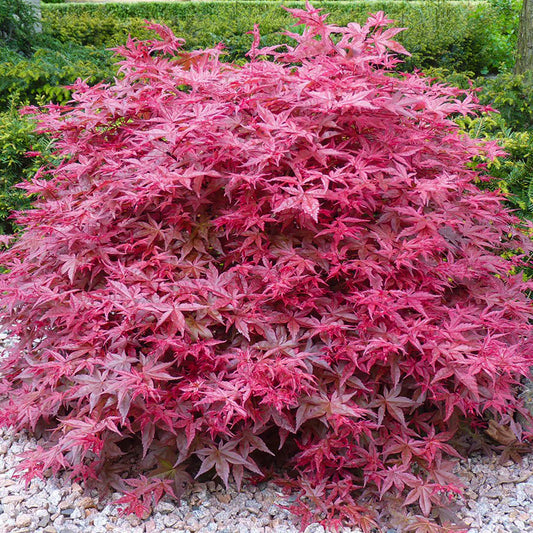Product description
Nectarine Nucipersica Patio Trees are perfect to grow in small gardens, borders & containers. This variety of fruit tree will grow smooth-skinned fruits with ease, largely due to the low maintenance nature of the tree. Any level of gardener can appreciate this variety for the aforementioned traits, their Spring flowers and bright green foliage.
Prunus Nucipersica Nectarine Trees are a dwarf fruiting garden tree variety. Being self-fertile, they don't require additional trees to help settle. It is a reliable, easy to grow tree that should be placed in a spot where full sun is available. Make sure to keep the specimen well fed and watered.
Please Note: When purchasing plants, please consider that each live item is unique and may therefore differ from the images shown, which are for illustration purposes only. The plant will be supplied in a growers pot. Depending on season, some plants may be pruned back to encourage growth and deciduous plants may arrive without leaves.
Plant specs, care guide & tips
Key features
Specifications
When to plant
| Jan | Feb | Mar | Apr | May | Jun | Jul | Aug | Sep | Oct | Nov | Dec |
|---|---|---|---|---|---|---|---|---|---|---|---|
Planting and period of interest times are general guidelines and may vary based on your location and conditions. For best results, consult local gardening resources.
Instructions
Top Tip
Prune nectarine trees annually in late winter or early spring to remove dead or damaged branches and shape the tree for optimal air circulation and sunlight. Thinning young fruit in early summer can improve the size and quality of the remaining nectarines. For the best crop, consider a sheltered position and protect blossoms from late frosts using horticultural fleece.
How to Water
Water nectarine trees regularly after planting to establish a strong root system, especially during dry periods. In the first year, ensure the soil remains consistently moist but not waterlogged. Once established, water deeply every 7–10 days during dry spells, focusing on the root zone. Early morning watering helps reduce evaporation and prevents fungal issues. Avoid wetting the leaves to minimise the risk of disease.
How to Plant
To plant a nectarine tree, choose a sunny location with well-draining, fertile soil. Dig a hole twice as wide as the root ball and slightly deeper than its height. Soak the root ball in water before planting, then place it in the hole with the graft point just above the soil level. Fill in with soil, firm it gently, and water thoroughly. Apply a mulch layer around the base to help retain moisture and suppress weeds, ensuring it is kept away from the trunk to prevent rot.

























